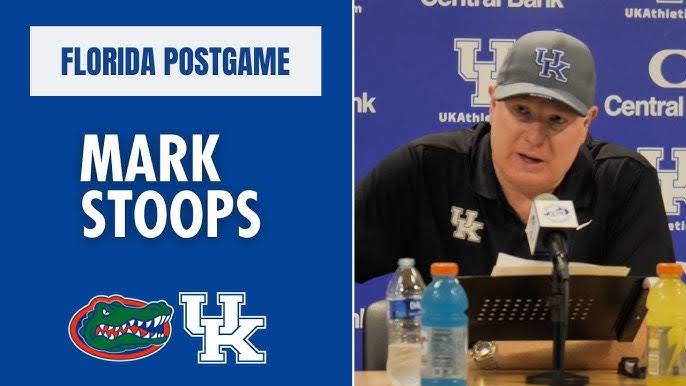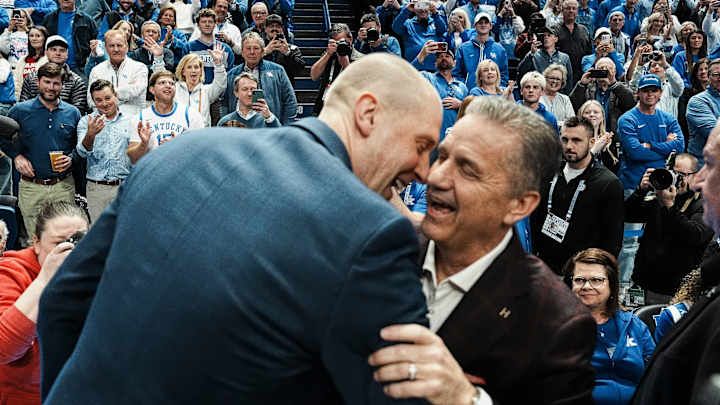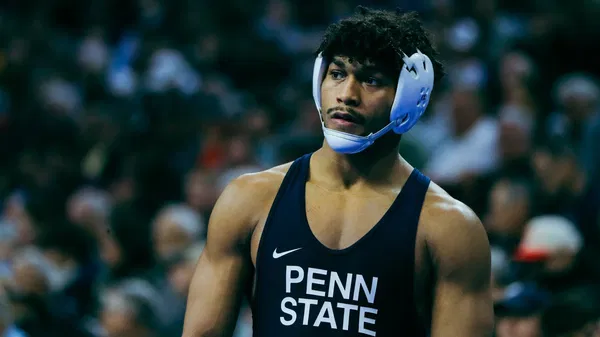Is Mark Stoops feeling the heat? Kentucky’s head coach faces mounting pressure after setbacks and a brutal 2025 schedule.
The future of Kentucky football head coach Mark Stoops is currently under a microscope as fans and analysts alike question how secure his position really is. After a disappointing 4–8 season, frustrations are mounting within the fan base, and there’s growing speculation about how much longer the university will remain committed to him—especially with rising coaching alternatives available and more competitive expectations from the program.
Adding fuel to the fire, Stoops recently lost a critical figure on his coaching staff—longtime assistant and recruiting ace Vince Marrow. Marrow’s departure to Louisville, Kentucky’s biggest rival, was a tough pill for many Wildcats fans to swallow. Not only did it weaken the internal structure of Stoops’ program, but it also handed an advantage to their direct competition. Many saw Marrow as a crucial part of Kentucky’s recruiting success and team culture, and losing him has intensified concerns about the program’s direction.
Over the past several months, Stoops has spoken frequently about his renewed sense of motivation and commitment. He’s emphasized that he’s never been more determined to succeed and turn things around. Some fans are clinging to that optimism, hopeful that his words will translate into on-field performance and a winning season. However, there’s a growing number of fans who remain skeptical. For them, talk is cheap, and the results haven’t backed up the rhetoric.
A significant portion of the fan base is now advocating for a coaching change. Their preferred replacement? Jon Sumrall, the head coach at Troy and a former Kentucky assistant who’s seen as a promising up-and-comer in the coaching ranks. However, as is often the case in college athletics, what fans want doesn’t always align with what university leadership is willing or able to do—especially when financial factors, such as buyout clauses, come into play. Stoops has a sizable contract, and parting ways with him would come with a steep cost.
The 2025 season looms large for Stoops and could ultimately determine his fate in Lexington. Unfortunately, the schedule is nothing short of brutal. The Wildcats face one of the toughest slates in the SEC, a stretch that many are calling a “gauntlet.” The conference is as deep and competitive as ever, and Kentucky will be going up against teams that are national championship contenders year in and year out. Given this, there’s a very real possibility that Kentucky could end the season without a single conference win if things don’t dramatically improve. Another 3–4 win campaign could push the program into crisis mode.
Should that scenario unfold, it would be extremely difficult for Athletics Director Mitch Barnhart to justify keeping Stoops at the helm. Two losing seasons in a row, particularly one following a 4-win effort, would mark a significant regression for a program that, until recently, had built a reputation for toughness, overachieving, and player development under Stoops’ leadership. Failing to reach bowl eligibility this year would likely turn up the temperature significantly on Stoops’ seat—perhaps to a point where change becomes unavoidable.
Stoops is currently the longest-tenured coach in the Southeastern Conference, a distinction that underscores both his accomplishments and the patience the university has shown. Since taking over in 2013, he has turned Kentucky from a perennial bottom-feeder into a program that, at its peak, could challenge for eight or nine wins a season. That progress didn’t happen overnight—it was the result of steady recruiting, strong development, and a cultural shift that Stoops helped usher in.
However, past accomplishments don’t always guarantee future job security, especially in a results-driven league like the SEC. The tolerance for losing is low, and fan bases are increasingly vocal and influential. What Stoops has built is certainly respectable, but if the momentum continues to slip, the administration might decide that it’s time for a new direction.
Kentucky’s leadership must weigh several factors. On one hand, there’s the risk of undoing years of stability and progress by moving on from a coach who has given the program its best stretch of success in recent memory. On the other hand, there’s the concern that things are heading in the wrong direction—and quickly. A continued slide could damage recruiting, fan engagement, and revenue, all of which are essential for long-term success.
Mitch Barnhart, who has supported Stoops for over a decade, may find himself facing one of the toughest decisions of his tenure. Does he give Stoops more time, believing that last year was an anomaly and that this season’s brutal schedule shouldn’t define the coach’s future? Or does he decide that back-to-back losing seasons signal a decline that cannot be ignored?
Ultimately, Stoops’ job security hinges on this season’s performance. If Kentucky can reach six wins and return to a bowl game, it may be enough to quiet the noise and give Stoops another year to reestablish stability. But if the team stumbles again—especially if the SEC portion of the schedule proves disastrous—the calls for change will grow louder, and Barnhart may be forced to act.
For now, Stoops is still in charge, still motivated, and still fighting to prove he’s the right man for the job. But with each loss, the pressure will intensify, and the margin for error will shrink. It’s not just about winning games anymore—it’s about showing progress, competing in the SEC, and proving that the Stoops era in Lexington stil
l has life left in it.



